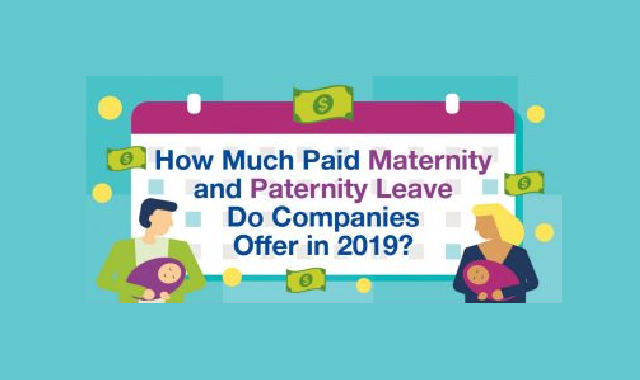The United States, when compared to other top economic
powers, does not have a good reputation when it comes to balancing work-life or
social care. When these two questions come together, precisely the issue of
paid parental leave, so it is safe to say that America does not lead the rest
of the world. When it comes to having children, it’s the key for the employees
to know what sort of paid paternal leaves their employers offer. It is also
essential to know your rights under the Family
and Medical Leave Act. It's necessary to look at the
info: how much paternity and maternity leave do American Companies
offer?
21.6% of the original 2,790 respondents said that their
companies offer new parent leave for childbirth or adoption. 65.8% of the
majority of respondents work for large companies with 250 or more employees.
The other 16.4% work for small companies with 1 to 49 employees, and 17.8% of
respondents work for medium companies with 50 to 249 employees.
Most respondents said that their companies offer four or
more weeks of paid maternity leaves.
Whereas 10.5% said that they get less than two weeks, 13.5% reported 2 to 4
weeks, 26.6% said 4 to 6 weeks, 25.5% said 6 to 8 weeks, and 23.9% said 8+
weeks. The same status is for Paternity leaves, which the majority said their
company offers four or more weeks of Paid
Paternity Leaves. 17% of the respondents said that their companies do not
provide Paid Paternity Leaves. 13.6%
gets less than two weeks, 18.4% gets up to 2 to 4 weeks, 21.4% reported to get
4 to 6 weeks, 14.5% gets 6 to 8 weeks, 15.0% gets 8+ weeks whereas, 17.0%
claimed to get no Paternity leaves.
55% of the respondents claimed that their companies pay
employees 100% of their salary during Maternity
leaves. Whereas 50% of respondents said that their companies offer 100% of
their salary during Paternity leaves. 78.1% said that the amount of paid
paternal leaves does not depend on whether or not they are considered the
primary or secondary caregiver.
Many respondents said the company offers them extended
paid leave for certain circumstances, that is, 49.2% for c-section, 32.1% for
the birth of multiples, and 37.7% for premature birth. A significant number of
respondents said that their companies offer new parents flexible hours when
they can return from their leave in the form of shifted work hours (49.6%),
work from home days (32.2%), and fewer work hours for the rest (26.6%). The
other 56.2% of female respondents said that their workspace has a dedicated
lactation or wellness room.
In this survey, 21.6% of employees said that their companies
offer paid leave policy, whereas
65.8% of respondents that work for large companies with over 250 employees said
their companies are more generous with leave than smaller businesses. The most
common leave offered was 4 to 6 weeks (26.6% of companies), with only 10.5%
offer less than two weeks. These are not ideal figures as it can take months
and months to recover from childbirth and support your partner, but everything
has to start from somewhere. While it has its limitations, this survey reveals
that many U.S. companies offer paid MATERNITY
and PATERNITY leave to their
employees.
Infographic by: https://www.quill.com/


